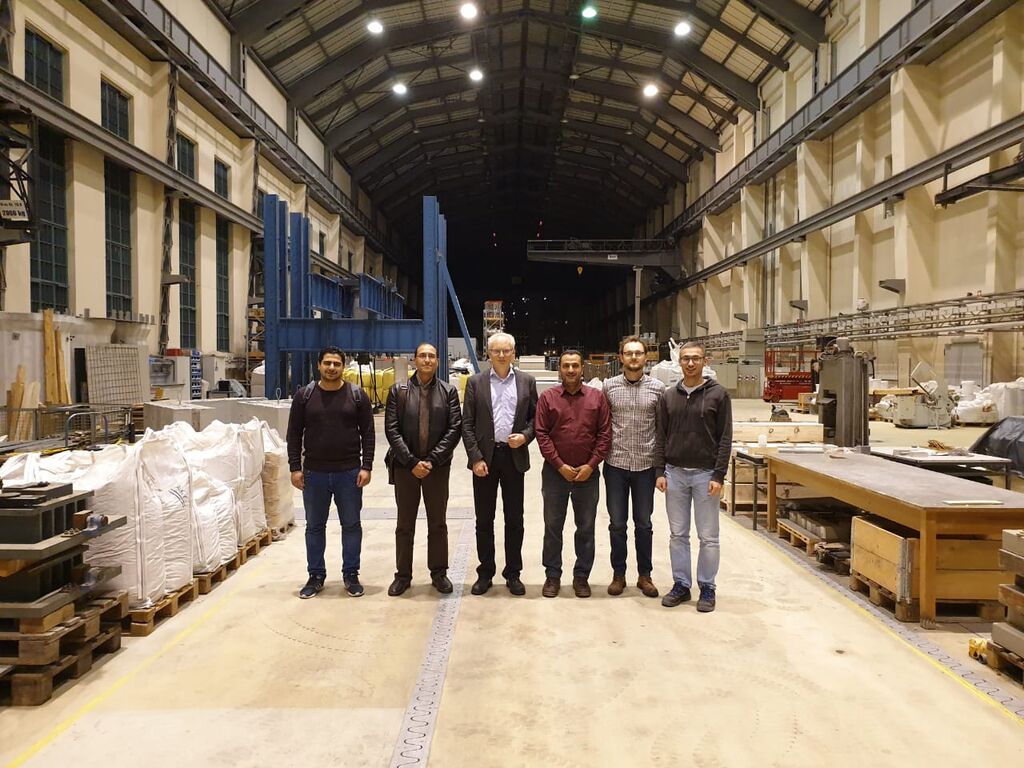NAWA scholarship holder Dr. Paweł Sikora works on innovative materials for making unique shapes from concrete using 3D printing.
Ever more objects can be made precisely with 3D printing. There are also more and more materials that can be used with this method. Among them is concrete, which can be used in 3D printing to produce structural elements with shapes impossible to obtain in any other way.
Dr. Paweł Sikora, who has worked on the development of an innovative material at the Technical University of Berlin on a NAWA fellowship under the Bekker Programme, is striving to refine the concrete mix to print light and durable building elements and to reduce energy consumption needed for heating and cooling. Researchers have developed an initial mix composition that enables printing ultra-light concrete elements with better thermal properties.
NAWA: Why is traditional concrete not suitable for 3D printing?
Paweł Sikora, PhD, Eng., West Pomeranian University of Technology in Szczecin: Traditional concrete mix is designed to fill the formwork. Concrete used in 3D technology should be sufficiently dense and harden faster than traditional concrete, so that it is able to sustain the pressure of subsequent printed layers. The aim of the project was to develop lightweight concrete mixes suitable for 3D printing.
What shapes and, more broadly, what objects can be produced from concrete using 3D printing in order to achieve improved thermal performance?
The advantage of 3D printing technology is architectural and geometric freedom, of course within reason. The advantage of this technique is the ability to print elements in complex shapes. It would be extremely complicated and time-consuming, or in some cases impossible, to obtain such shapes with the use of the traditional formwork.
The improvement of thermal parameters can be achieved by introducing into the mix a right type of (usually lightweight) aggregate with low thermal conductivity or by using appropriate aeration additives. In our project, we have studied the basic properties of the new mixes. Moreover, we have ascertained correlations that will allow us to further optimise their composition. In addition, we have studied the potential of applying nanosilica, which, when added to the mix, can positively modify the structure of the finished element, significantly improving selected concrete properties.
Thanks to 3D printing technology, it is also possible to design an appropriate layout (skeleton) of walls, which can be filled with insulation materials. This results in better insulation properties of the building.
How large elements can be produced in this way?
You can print any object using 3D technology, from small garden structures to residential buildings. The first buildings have already been completed using this technology.
How could such printed concrete construction elements be used? Will they just ‘warm’ or can they also ‘cool’ buildings?
The structural elements used can serve not only to protect buildings from heat loss. They can be used also for example in countries with a Mediterranean climate, where huge financial resources are spent on cooling buildings. In short, it can be said that these elements render it possible to keep buildings cool.
What additional properties can such structural elements have?
A great advantage of using lightweight concrete is that we reduce the weight of the structure and improve its resistance to high temperature (fire resistance).
What was the impact of the NAWA scholarship on your development as a scientist?
The research fellowship financed from the NAWA scholarship allowed me to carry out extensive preliminary research. Thanks to that, I obtained funding for the project in the form of one of the most prestigious individual research and training grants in the European Union – under Marie Skłodowska-Curie Actions. This enables me to continue my research work on this subject in Berlin for the next two years.
If you were to encourage other scientists to take part in the Bekker Programme, what is the greatest value of a NAWA-funded fellowship?
Expanding scientific horizons and gaining access to research equipment that is not available at the home institution. Looking at research problems from a different perspective and exchanging observations with scientists from all over the world, who also carry out similar research projects at a given institution. Moreover, establishing international contacts, which provide an opportunity for further scientific cooperation and application for further research projects.
Thank you for your time.

Paweł Sikora, PhD, Eng. (second from the right) with his colleagues from the research team in the TU Berlin laboratory hall where the research was carried out.
Paweł Sikora, PhD, Eng. is assistant professor at the Department of Building Engineering, Faculty of Civil and Environmental Engineering, West Pomeranian University of Technology in Szczecin. His main research interests are 3D printing technology and the use of nanometric additives to modify the construction properties of cement composites.
Dr. Sikora has received many awards for his research work, including a scholarship from the Minister of Science and Higher Education for outstanding young scientists and the START 2019 scholarship awarded by the Foundation for Polish Science. He is currently working on the research project ‘Ultra-Lightweight Concrete for 3D Printing Technologies (Ultra-LightCon-3D)’ as an individual fellowship (Marie Skłodowska-Curie Actions – Horizon2020 programme) at the Technical University of Berlin. The project is a follow-up of his research work carried out under a NAWA scholarship. Dr. Paweł Sikora is a member of the Polonium Foundation.
How to receive a NAWA scholarship under the Bekker Programme?
Detailed information about the NAWA programme can be found HERE
Photo on home page ©AndSus.adobe.com.